Abstract
Electrophysiological studies were performed on frog and guinea-pig peripheral nerves to determine the effect of temperature on conduction at the site of pressure and demyelinating lesions. An increased susceptibility to thermally-induced conduction blockade has been demonstrated. In pressure-injured frog and guinea-pig nerves, conduction blocks occur at temperatures approximately 6°C lower than in normal nerves. A similar phenomenon occurs in guinea-pig demyelinated nerve (experimental allergic neuritis) and in some cases at temperatures around 15°C lower than in controls. It is suggested that these effects are the result of a critical lowering by temperature of an already markedly depressed conduction safety factor. In support of this, it has been shown that calcium ion depletion, which would be expected to increase the conduction safety factor by lowering the threshold for excitation, counteracts the increased thermal sensitivity of frog pressure-injured nerve. These findings are discussed in relation to well-known temperature effects in multiple sclerosis. They add support to an earlier proposed hypothesis that the changes in signs and symptoms with a change of body temperature in multiple sclerosis may be caused by an effect of temperature on axonal conduction.
Full text
PDF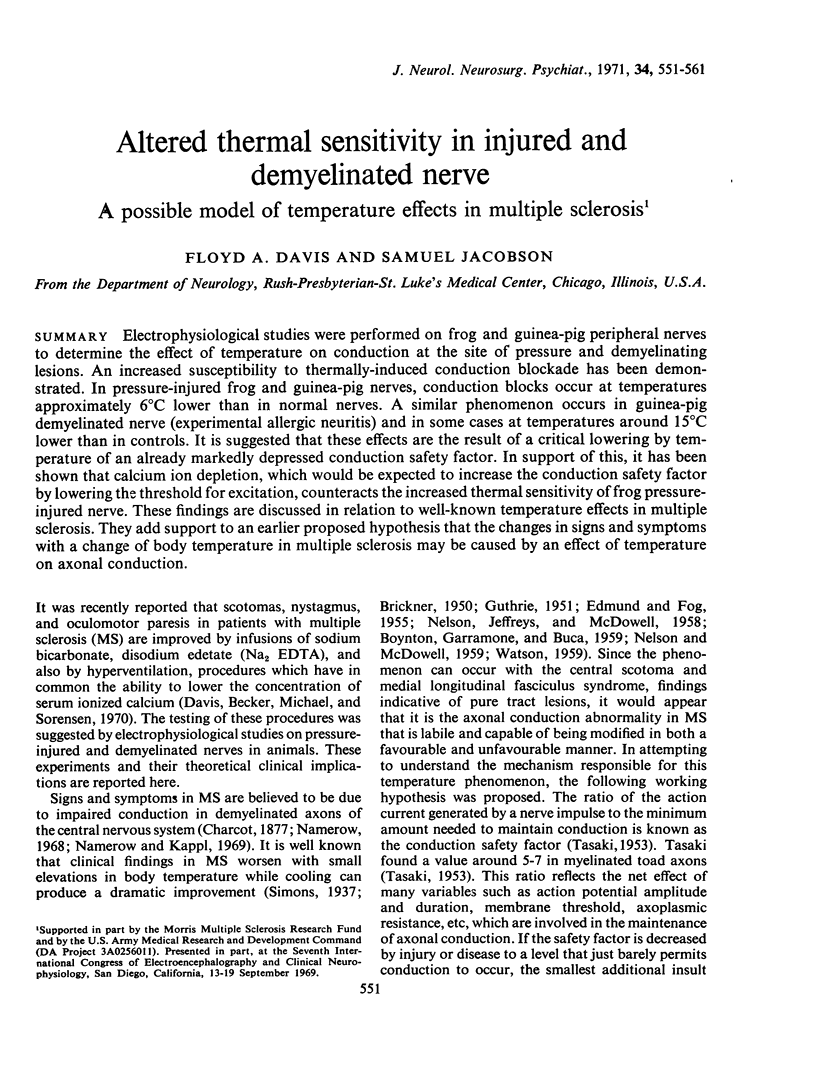
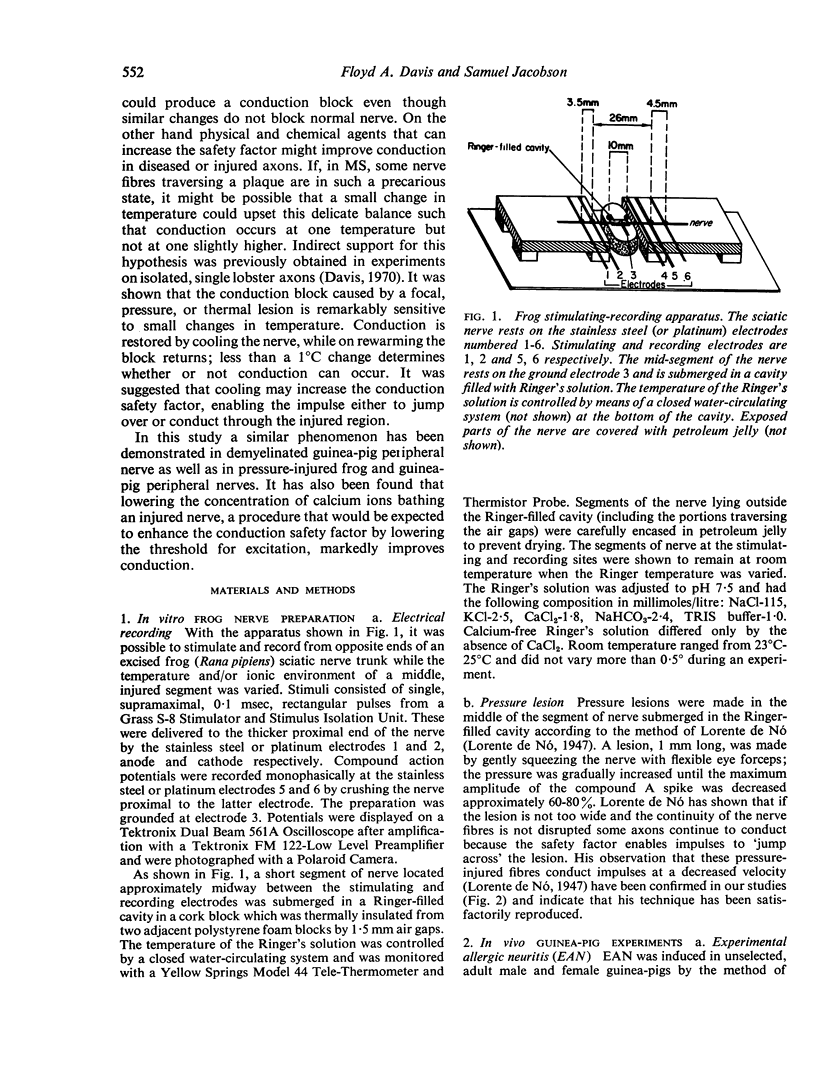
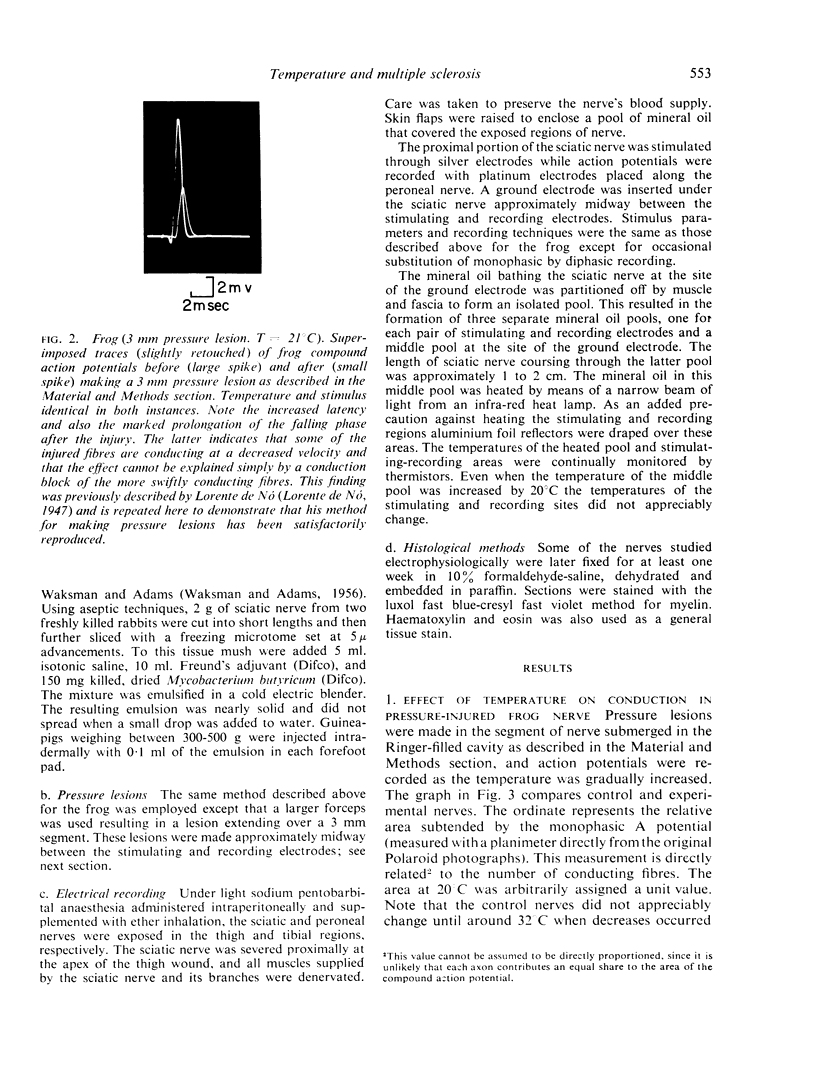
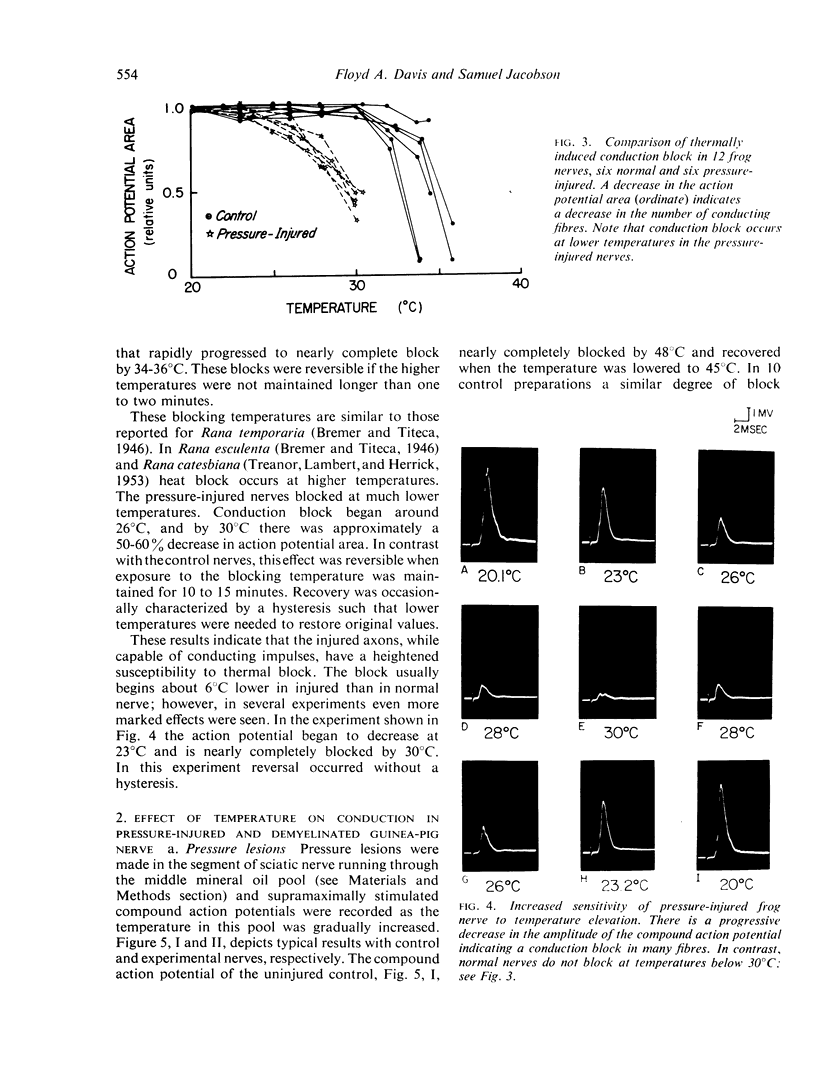
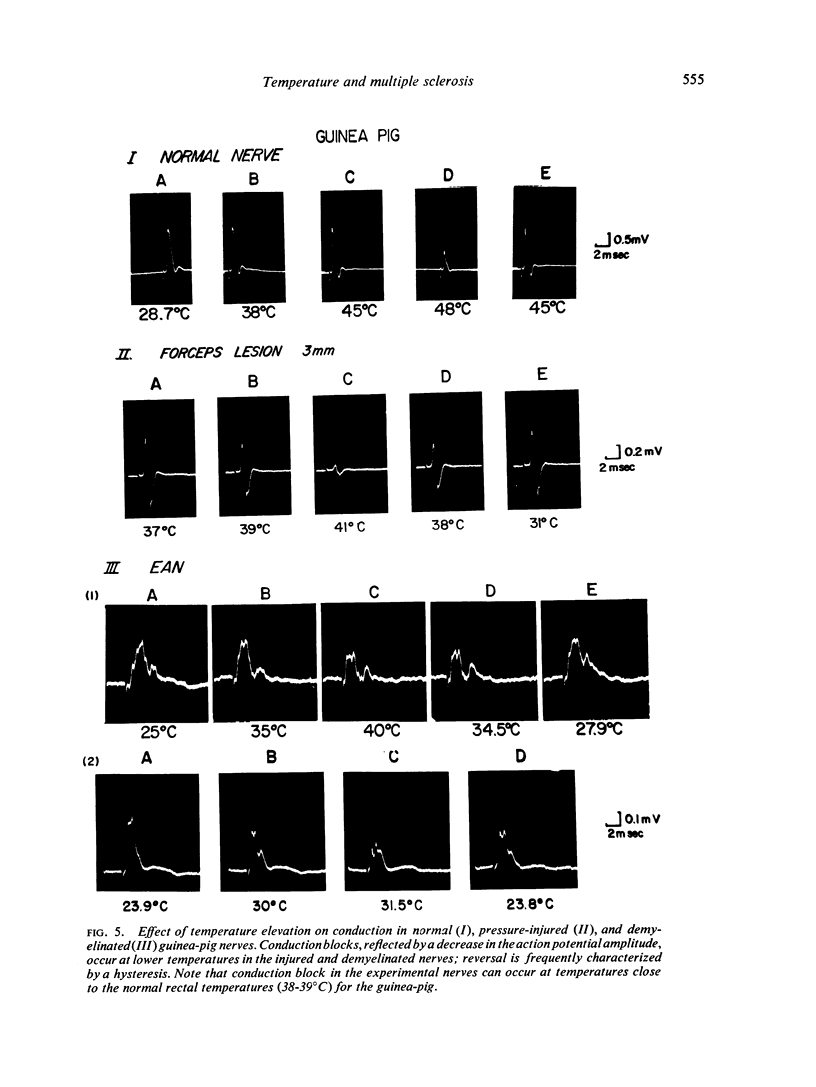
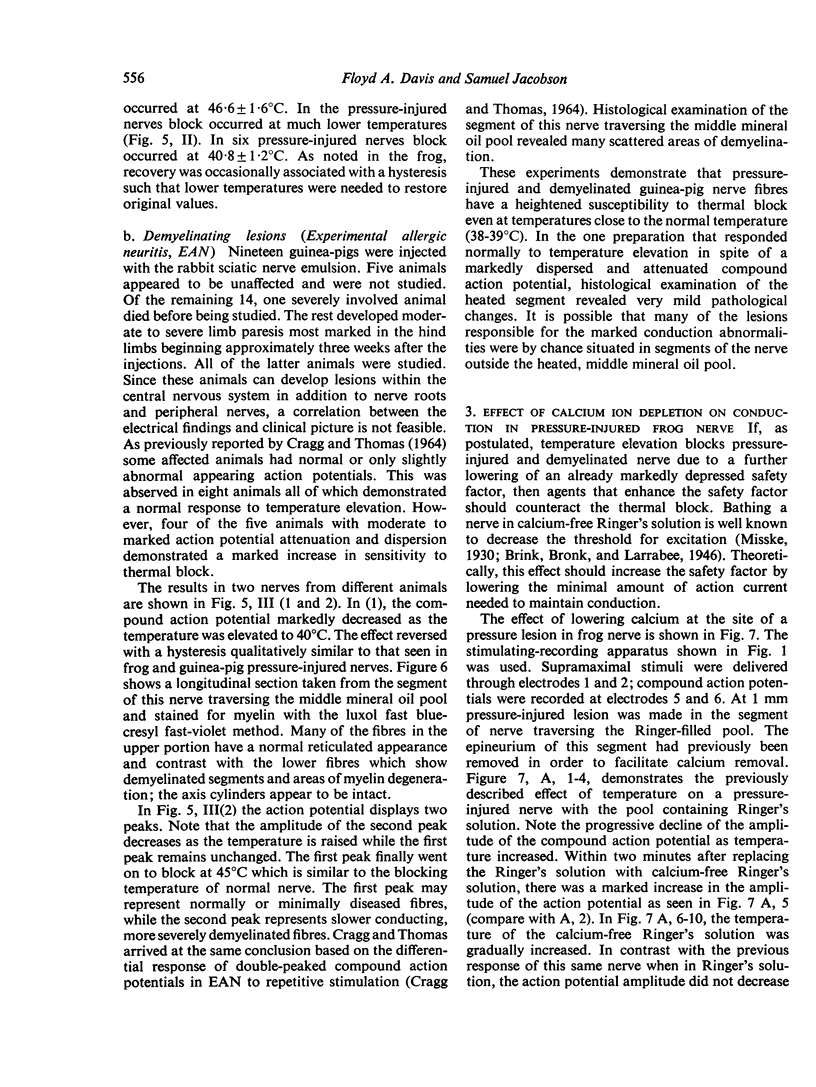
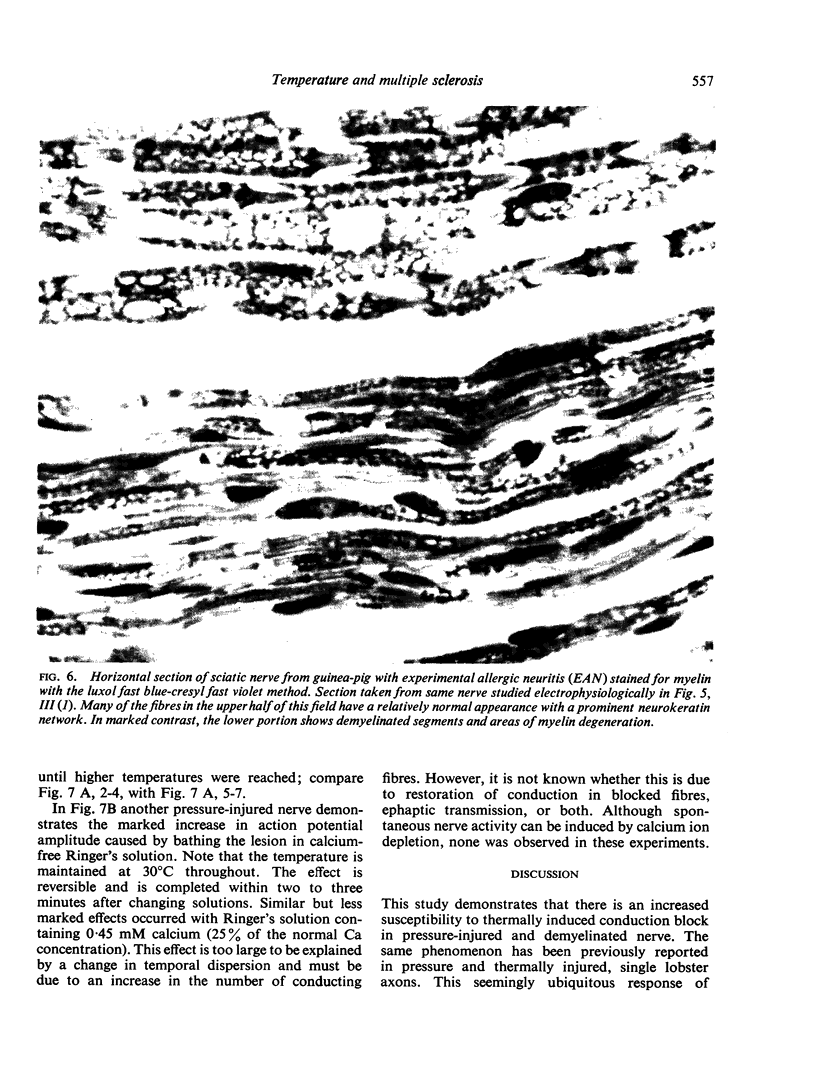
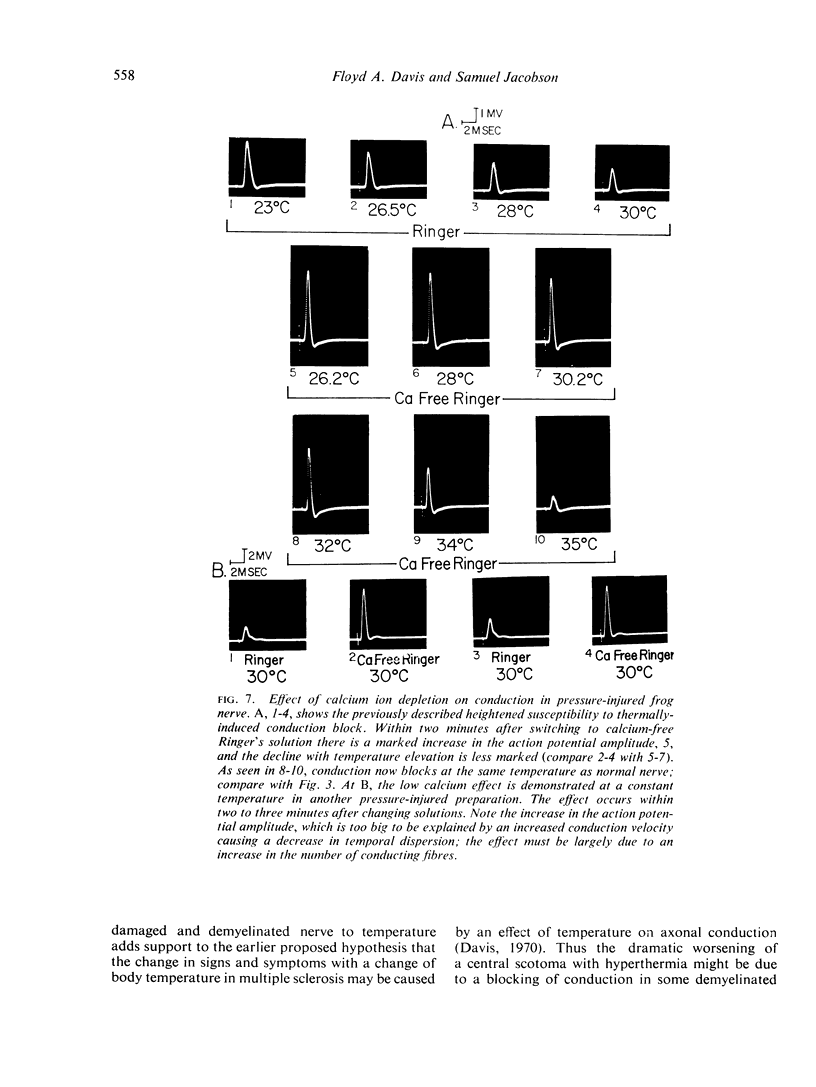
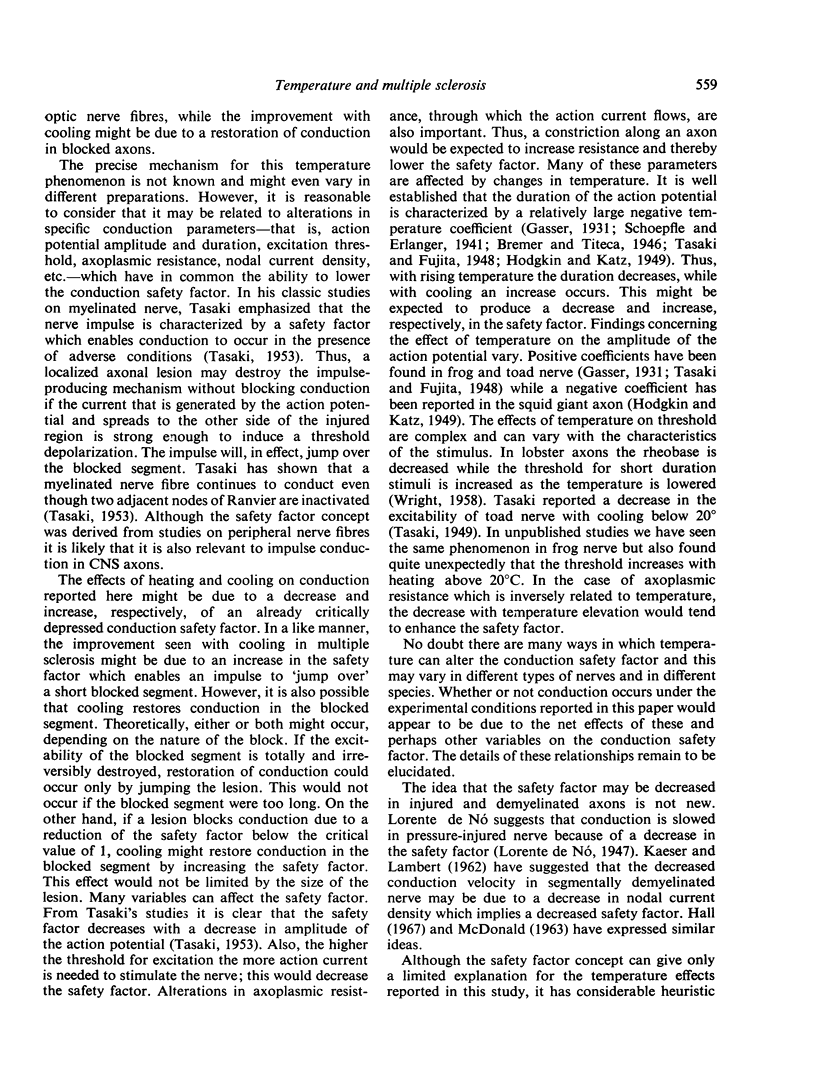
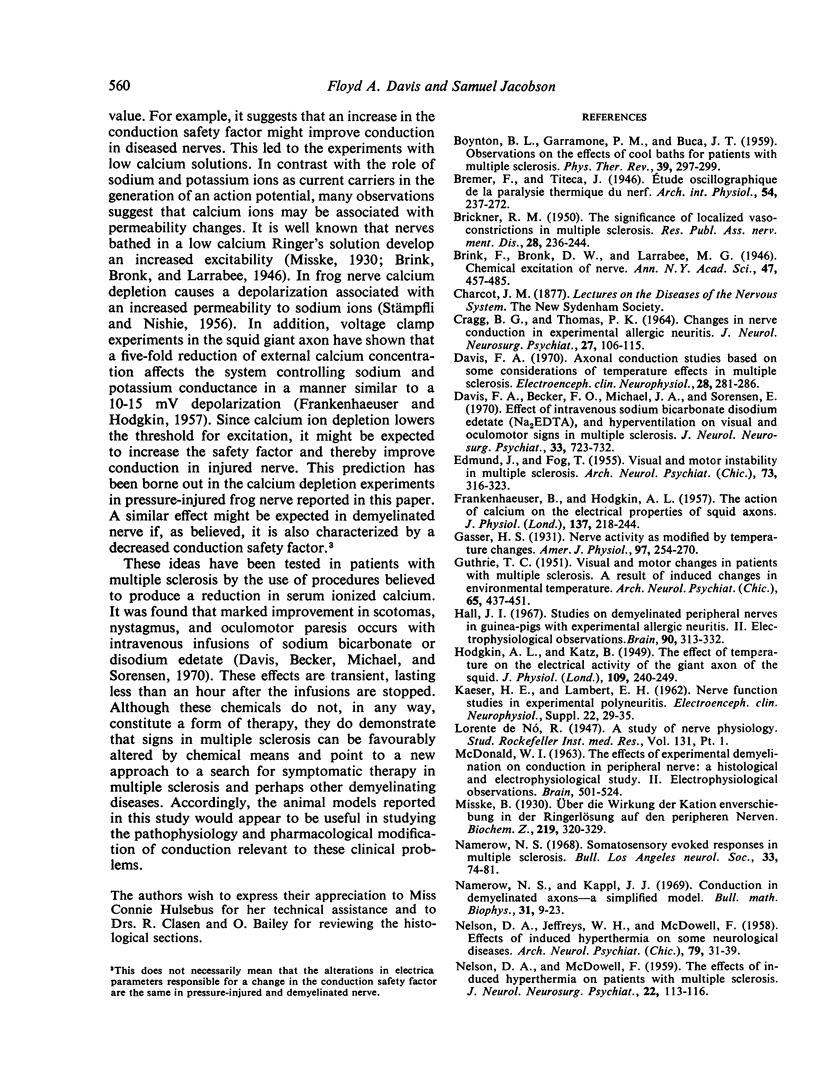
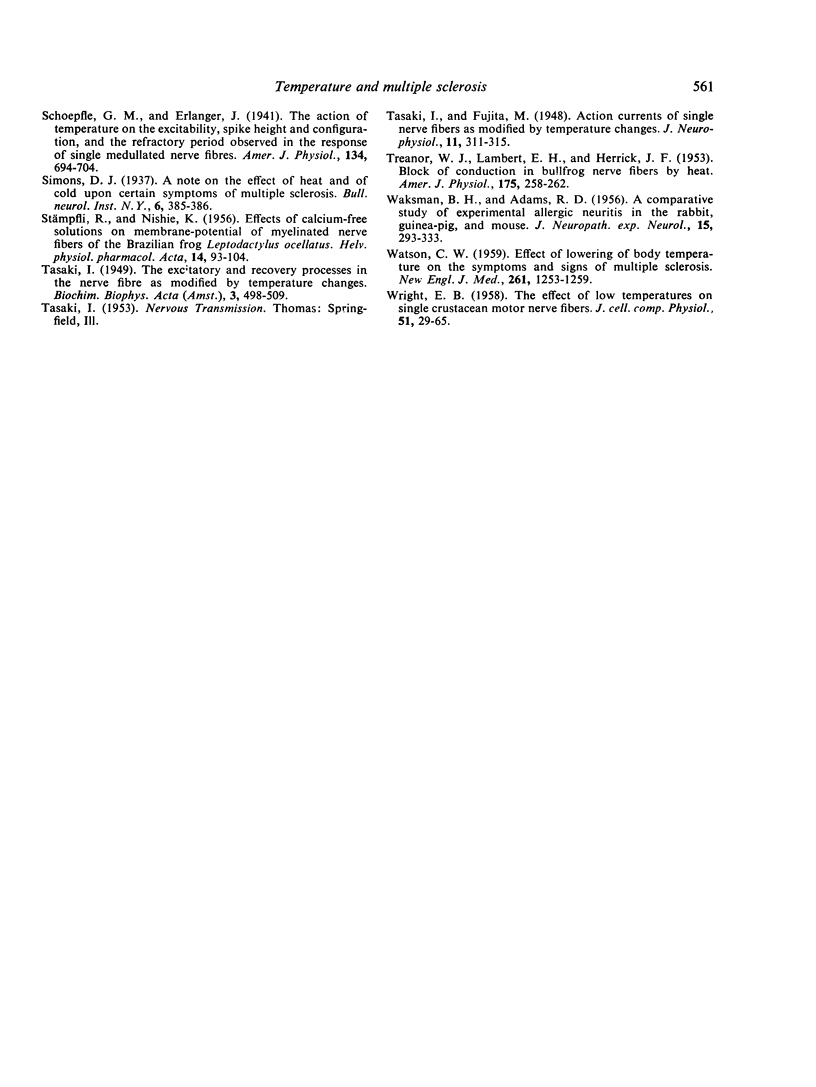
Images in this article
Selected References
These references are in PubMed. This may not be the complete list of references from this article.
- BOYNTON B. L., GARRAMONE P. M., BUCA J. T. Observations on the effects of cool baths for patients with multiple sclerosis. Phys Ther Rev. 1959 May;39(5):297–299. doi: 10.1093/ptj/39.5.297. [DOI] [PubMed] [Google Scholar]
- BRICKNER R. M. The significance of localized vasoconstrictions in multiple sclerosis; transient, sudden miniature attacks of multiple sclerosis. Res Publ Assoc Res Nerv Ment Dis. 1950;28:236–244. [PubMed] [Google Scholar]
- CRAGG B. G., THOMAS P. K. CHANGES IN NERVE CONDUCTION IN EXPERIMENTAL ALLERGIC NEURITIS. J Neurol Neurosurg Psychiatry. 1964 Apr;27:106–115. doi: 10.1136/jnnp.27.2.106. [DOI] [PMC free article] [PubMed] [Google Scholar]
- Davis F. A. Axonal conduction studies based on some considerations of temperature effects in multiple sclerosis. Electroencephalogr Clin Neurophysiol. 1970 Mar;28(3):281–286. doi: 10.1016/0013-4694(70)90164-1. [DOI] [PubMed] [Google Scholar]
- Davis F. A., Becker F. O., Michael J. A., Sorensen E. Effect of intravenous sodium bicarbonate, disodium edetate (Na2EDTA), and hyperventilation on visual and oculomotor signs in multiple sclerosis. J Neurol Neurosurg Psychiatry. 1970 Dec;33(6):723–732. doi: 10.1136/jnnp.33.6.723. [DOI] [PMC free article] [PubMed] [Google Scholar]
- EDMUND J., FOG T. Visual and motor instability in multiple sclerosis. AMA Arch Neurol Psychiatry. 1955 Mar;73(3):316–323. doi: 10.1001/archneurpsyc.1955.02330090062007. [DOI] [PubMed] [Google Scholar]
- FRANKENHAEUSER B., HODGKIN A. L. The action of calcium on the electrical properties of squid axons. J Physiol. 1957 Jul 11;137(2):218–244. doi: 10.1113/jphysiol.1957.sp005808. [DOI] [PMC free article] [PubMed] [Google Scholar]
- GUTHRIE T. C. Visual and motor changes in patients with multiple sclerosis; a result of induced changes in environmental temperature. AMA Arch Neurol Psychiatry. 1951 Apr;65(4):437–451. doi: 10.1001/archneurpsyc.1951.02320040027002. [DOI] [PubMed] [Google Scholar]
- HODGKIN A. L., KATZ B. The effect of temperature on the electrical activity of the giant axon of the squid. J Physiol. 1949 Aug;109(1-2):240–249. doi: 10.1113/jphysiol.1949.sp004388. [DOI] [PMC free article] [PubMed] [Google Scholar]
- Hall J. I. Studies on demyelinated peripheral nerves in guinea-pigs with experimental allergic neuritis. A histological and electrophysiological study. II. Electrophysiological observations. Brain. 1967 Jun;90(2):313–332. doi: 10.1093/brain/90.2.313. [DOI] [PubMed] [Google Scholar]
- MCDONALD W. I. THE EFFECTS OF EXPERIMENTAL DEMYELINATION ON CONDUCTION IN PERIPHERAL NERVE: A HISTOLOGICAL AND ELECTROPHYSIOLOGICAL STUDY. II. ELECTROPHYSIOLOGICAL OBSERVATIONS. Brain. 1963 Sep;86:501–524. doi: 10.1093/brain/86.3.501. [DOI] [PubMed] [Google Scholar]
- NELSON D. A., JEFFREYS W. H., McDOWELL F. Effects of induced hyperthermia on some neurological diseases. AMA Arch Neurol Psychiatry. 1958 Jan;79(1):31–39. doi: 10.1001/archneurpsyc.1958.02340010049003. [DOI] [PubMed] [Google Scholar]
- NELSON D. A., McDOWELL F. The effects of induced hyperthermia on patients with multiple sclerosis. J Neurol Neurosurg Psychiatry. 1959 May;22(2):113–116. doi: 10.1136/jnnp.22.2.113. [DOI] [PMC free article] [PubMed] [Google Scholar]
- Namerow N. S., Kappl J. J. Conduction in demyelinated axons--a simplified model. Bull Math Biophys. 1969 Mar;31(1):9–23. doi: 10.1007/BF02478204. [DOI] [PubMed] [Google Scholar]
- Namerow N. S. Somatosensory evoked responses in multiple sclerosis. Bull Los Angeles Neurol Soc. 1968 Apr;33(2):74–81. [PubMed] [Google Scholar]
- STAMPFLI R., NISHIE K. Effects of calcium-free solutions on membrane-potential of myelinated nerve fibers of the Brazilian frog Leptodactylus ocellatus. Helv Physiol Pharmacol Acta. 1956;14(1):93–104. [PubMed] [Google Scholar]
- TREANOR W. J., LAMBERT E. H., HERRICK J. F. Block of conduction in bullfrog nerve fibers by heat. Am J Physiol. 1953 Nov;175(2):258–262. doi: 10.1152/ajplegacy.1953.175.2.258. [DOI] [PubMed] [Google Scholar]
- WAKSMAN B. H., ADAMS R. D. A comparative study of experimental allergic neuritis in the rabbit, guinea pig, and mouse. J Neuropathol Exp Neurol. 1956 Jul;15(3):293–334. doi: 10.1097/00005072-195607000-00005. [DOI] [PubMed] [Google Scholar]
- WATSON C. W. Effect of lowering of body temperature on the symptoms and signs of multiple sclerosis. N Engl J Med. 1959 Dec 17;261:1253–1259. doi: 10.1056/NEJM195912172612501. [DOI] [PubMed] [Google Scholar]
- WRIGHT E. B. The effect of low temperatures on single crustacean motor nerve fibers. J Cell Physiol. 1958 Feb;51(1):29–65. doi: 10.1002/jcp.1030510104. [DOI] [PubMed] [Google Scholar]



